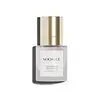What's inside
What's inside
 Key Ingredients
Key Ingredients

 Benefits
Benefits

 Concerns
Concerns

 Ingredients Side-by-side
Ingredients Side-by-side

Water
Skin ConditioningAzelaic Acid
BufferingGlycerin
HumectantPropanediol
SolventGlycereth-26
HumectantAvena Sativa Kernel Flour
AbrasiveCarnosine
Skin ConditioningAcetyl Tetrapeptide-2
Skin ConditioningCeramide NP
Skin ConditioningCeramide EOP
Skin ConditioningCeramide Ns
Skin ConditioningCeramide As
Skin ConditioningCeramide AP
Skin ConditioningGallyl Glucoside
AntioxidantPropyl Gallate
AntioxidantEpigallocatechin Gallatyl Glucoside
AntioxidantDaucus Carota Sativa Root Cell Culture Lysate
Skin ConditioningGossypium Herbaceum Callus Culture
Skin ConditioningSphingomonas Ferment Extract
Skin ConditioningEthylhexylglycerin
Skin ConditioningHydrogenated Lecithin
EmulsifyingSucrose Distearate
EmollientGlyceryl Stearate
EmollientDipropylene Glycol
HumectantDehydroacetic Acid
PreservativeCaprylyl Glycol
EmollientPhenoxyethanol
PreservativeTriethanolamine
BufferingBenzyl Alcohol
PerfumingCitric Acid
BufferingWater, Azelaic Acid, Glycerin, Propanediol, Glycereth-26, Avena Sativa Kernel Flour, Carnosine, Acetyl Tetrapeptide-2, Ceramide NP, Ceramide EOP, Ceramide Ns, Ceramide As, Ceramide AP, Gallyl Glucoside, Propyl Gallate, Epigallocatechin Gallatyl Glucoside, Daucus Carota Sativa Root Cell Culture Lysate, Gossypium Herbaceum Callus Culture, Sphingomonas Ferment Extract, Ethylhexylglycerin, Hydrogenated Lecithin, Sucrose Distearate, Glyceryl Stearate, Dipropylene Glycol, Dehydroacetic Acid, Caprylyl Glycol, Phenoxyethanol, Triethanolamine, Benzyl Alcohol, Citric Acid
Water
Skin ConditioningAzelaic Acid
BufferingSimmondsia Chinensis Seed Oil
EmollientTranexamic Acid
AstringentGlycerin
HumectantDimethicone
EmollientNiacinamide
SmoothingPentylene Glycol
Skin ConditioningCitric Acid
BufferingHydroxyethyl Acrylate/Sodium Acryloyldimethyl Taurate Copolymer
Emulsion StabilisingLauryl Glucoside
CleansingPolyglyceryl-2 Dipolyhydroxystearate
Skin ConditioningButylene Glycol
HumectantBisabolol
MaskingSclerotium Gum
Emulsion StabilisingEthylhexylglycerin
Skin ConditioningChlorphenesin
AntimicrobialAllantoin
Skin ConditioningO-Cymen-5-Ol
AntimicrobialPolysorbate 60
EmulsifyingSorbitan Isostearate
EmulsifyingGlycyrrhiza Glabra Root Extract
BleachingAdenosine
Skin ConditioningTocopherol
AntioxidantWater, Azelaic Acid, Simmondsia Chinensis Seed Oil, Tranexamic Acid, Glycerin, Dimethicone, Niacinamide, Pentylene Glycol, Citric Acid, Hydroxyethyl Acrylate/Sodium Acryloyldimethyl Taurate Copolymer, Lauryl Glucoside, Polyglyceryl-2 Dipolyhydroxystearate, Butylene Glycol, Bisabolol, Sclerotium Gum, Ethylhexylglycerin, Chlorphenesin, Allantoin, O-Cymen-5-Ol, Polysorbate 60, Sorbitan Isostearate, Glycyrrhiza Glabra Root Extract, Adenosine, Tocopherol
 Reviews
Reviews

Ingredients Explained
These ingredients are found in both products.
Ingredients higher up in an ingredient list are typically present in a larger amount.
Azelaic acid is a multitasker ingredient that helps treat acne, pigmentation, and irritation. It is a great option for sensitive skin.
What makes azelaic special?
The best thing about azelaic acid is it's gentleness. It's generally well-tolerated and safe to use alongside other actives like niacinamide or salicylic acid.
Unlike AHAs, azelaic acid will not make you photosensitive/sun sensitive.
You can find this ingredient naturally occurring in grains like wheat, rye, and barley. In cosmetics, azelaic acid is typically lab-made, which is more stable and effective.
Learn more about Azelaic AcidCitric Acid is an alpha hydroxy acid (AHA) naturally found in citrus fruits like oranges, lemons, and limes.
Like other AHAs, citric acid can exfoliate skin by breaking down the bonds that hold dead skin cells together. This helps reveal smoother and brighter skin underneath.
However, this exfoliating effect only happens at high concentrations (20%) which can be hard to find in cosmetic products.
Due to this, citric acid is usually included in small amounts as a pH adjuster. This helps keep products slightly more acidic and compatible with skin's natural pH.
In skincare formulas, citric acid can:
While it can provide some skin benefits, research shows lactic acid and glycolic acid are generally more effective and less irritating exfoliants.
Most citric acid used in skincare today is made by fermenting sugars (usually from molasses). This synthetic version is identical to the natural citrus form but easier to stabilize and use in formulations.
Read more about some other popular AHA's here:
Learn more about Citric AcidEthylhexylglycerin (we can't pronounce this either) is commonly used as a preservative and skin softener. It is derived from glyceryl.
You might see Ethylhexylglycerin often paired with other preservatives such as phenoxyethanol. Ethylhexylglycerin has been found to increase the effectiveness of these other preservatives.
Glycerin is already naturally found in your skin. It helps moisturize and protect your skin.
A study from 2016 found glycerin to be more effective as a humectant than AHAs and hyaluronic acid.
As a humectant, it helps the skin stay hydrated by pulling moisture to your skin. The low molecular weight of glycerin allows it to pull moisture into the deeper layers of your skin.
Hydrated skin improves your skin barrier; Your skin barrier helps protect against irritants and bacteria.
Glycerin has also been found to have antimicrobial and antiviral properties. Due to these properties, glycerin is often used in wound and burn treatments.
In cosmetics, glycerin is usually derived from plants such as soybean or palm. However, it can also be sourced from animals, such as tallow or animal fat.
This ingredient is organic, colorless, odorless, and non-toxic.
Glycerin is the name for this ingredient in American English. British English uses Glycerol/Glycerine.
Learn more about GlycerinWater. It's the most common cosmetic ingredient of all. You'll usually see it at the top of ingredient lists, meaning that it makes up the largest part of the product.
So why is it so popular? Water most often acts as a solvent - this means that it helps dissolve other ingredients into the formulation.
You'll also recognize water as that liquid we all need to stay alive. If you see this, drink a glass of water. Stay hydrated!
Learn more about Water